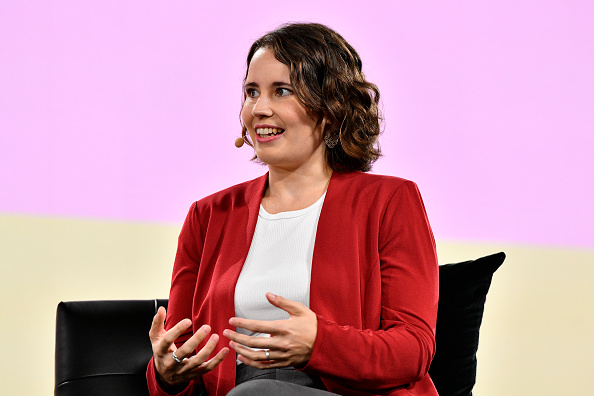How Working From Home Has Changed Employees
They are used to far greater independence. And they may value personal time more.
The employees who return to the office after a year of remote work aren’t the employees their bosses remember.
They have spent over a year adjusting to a radically different rhythm—both in terms of work and their personal lives. They have shifted their working hours, and learned to manage their own tasks without oversight. They may place more value on their family time or personal priorities, and perhaps been forever changed by a loss or health concerns. After a year of working in solitude, many have come to expect more control over how, when and where their work gets done, and to have greater autonomy relative to their managers and organisations.
They may not even feel like they need a whole lot of managing anymore. “Employees are taking on more of the managerial responsibility for their work,” says Holly Birkett, a lecturer at the University of Birmingham in Britain and co-director at the university’s Equal Parenting Project, which surveyed managers and employees during Covid. “They are probably not getting paid any more, but they are feeling more responsibility for getting things done.”
All these changes add up to a challenge for managers, who will need to think differently about how to mentor and coach their team members effectively as they return to the office. Their employees might look like the same people. But rest assured, many aren’t.
Start from scratch
For starters, bosses should consider renewing their relationship with every single employee—even those they’ve managed for years—as if they are starting from scratch.
To that end, they shouldn’t assume what their employees can or can’t do based on what they could or couldn’t do before the pandemic, since they may have acquired new capacities while working from home. Perhaps a junior employee has learned to identify her own tasks and deadlines without the boss laying them out for her; perhaps an arrogant and standoffish sales representative has developed a newly charming phone persona after months of relating long distance or being humbled by pandemic fears.
As a result, it’s best to think about them as fresh hires, asking them how it feels to be back, what they look forward to accomplishing in the months or years ahead, and how they hope to combine home and office time.
Managers might think about treating the initial three to six months after the office reopens as something like a probationary period—not with an eye to firing people, but as a way to assess how employees have grown or changed, and how their own management tactics need to evolve in return.
Taste of independence
Probably the biggest change for managers is that many of their direct reports will have acquired a taste for independence, and a lot less managerial oversight. It isn’t easy to go from a year of freedom to being under the boss’s thumb.
“There is a good chance that those who have been working from home have come to appreciate the autonomy they have gained,” says David Pauleen, a professor in technology management at the School of Management at Massey University in New Zealand, who has studied the work patterns of highly autonomous remote workers. “Some employees might bristle if this management trust in employee capabilities to work more autonomously suddenly ceased.”
Bosses who are nervous about allowing in-office employees the same kind of autonomy they enjoyed at home should pause and remember what they observed during the pandemic. That is, more productive workers. Sarah Forbes, co-director of the Equal Parenting Project, says that “against managers’ expectations, the majority of employees can be trusted to work flexibly, and employees are more productive.” By stepping back, she says, “managers were getting better results.”
Along with acquiring more autonomy over how their work gets done, the past year saw many employees get more control over when their work gets done. Mairead O’Connor, an honorary visiting research fellow at the University of New South Wales Business School, says her research found that during Covid, “management noticed that their workers sought nonstandard work time during the day. It turned out they spent less hours a day working [on weekdays] before 5 p.m., but there was a dramatic increase in the evening and weekends.”
Many employees aren’t going to give up that flexibility easily. Dr. O’Connor recommends that bosses establish core hours during which every worker on a team or project must be online or in the office—and then give employees the flexibility to manage the rest of their schedule.
For managers who are used to tracking their team’s efforts based on a 9-to-5 schedule, this will require a profound shift: managing team members based on progress toward agreed-upon objectives, rather than the number of hours they spend sitting at their desk.
But that doesn’t mean withdrawing supervision. Khim Kelly, a professor of accounting at the University of Central Florida’s Kenneth G. Dixon School of Accounting, found that during Covid, the supervisory mechanisms that are most beneficial to productivity were also the ones that decreased most, including face-to-face meetings and co-worker or third-party evaluations. They were replaced by less effective (but more “remote friendly”) approaches, such as online meetings, email and work logs. For that reason, she says, “managers still need to maintain face-to-face touch points with their employees, as well as reliance on a broader set of data points about an employee’s performance.”
Meetings and socialising
Then there’s the dreaded meeting. Employees have long complained about meeting overload, of course, but the past year took that exhaustion to a whole new level—thanks to the frustrations of virtual meetings plus the reliance on meetings as a way to make up for the loss of informal, spontaneous interactions.
Employees aren’t going to take kindly to going back to the same old same old. The idea that employees should be available to meet anytime between 9 and 5, five days a week, is an outdated way of thinking; so is the idea that employees are cloistered at home, ready to take a call at any time. In the hybrid workplace, employees should be able to keep meetings to the days that they are in the office. That will only work if managers take a team-centric approach to the hybrid workplace, and build a common schedule that brings everyone on the team to the office on the same two or three days each week.
Employees also have gotten used to the idea that meetings are a place for informal check-ins with their colleagues. Over the course of the pandemic, Dr. Birkett says, managers have used “team meetings and communications as a tool to enhance well-being and support employees, rather than purely for operational reasons.” Managers should continue that practice, especially because a year apart may have weakened ties—and trust—among employees.
Dr. Kelly also advises managers to “create opportunities for people to be back in the same space.”
A common schedule is part of that strategy, but managers can do more by encouraging them to maximise their interactions during office days. For instance, if a pre-Covid office was the kind of place where people would get the side eye for spending too much time chit-chatting in the break room, bosses can make an explicit break with that past.
Of course, encouraging social interaction isn’t the same thing as making that interaction mandatory. The past year has allowed introverts to reclaim their freedom from forced, uncomfortable socialising, and given extroverts the opportunity to pursue friendships and activities with colleagues outside of the workplace. Rather than trying to turn back the clock, managers should recognise that some of their employees are going to approach the return to the office like a reunion of long-lost friends, while others are just there to get the job done.
Recognising that different employees have different needs has always been the most important—and the hardest—part about being a manager. That will never be more true than in the coming months. Employees are emerging from the pandemic year as changed, but in different ways. The best managers won’t just recognise that. They’ll also benefit from it.
Reprinted by permission of The Wall Street Journal, Copyright 2021 Dow Jones & Company. Inc. All Rights Reserved Worldwide. Original date of publication: 12, June 2021
 Copyright 2020, Dow Jones & Company, Inc. All Rights Reserved Worldwide. LEARN MORE
Copyright 2020, Dow Jones & Company, Inc. All Rights Reserved Worldwide. LEARN MORE
This stylish family home combines a classic palette and finishes with a flexible floorplan
Just 55 minutes from Sydney, make this your creative getaway located in the majestic Hawkesbury region.
The marketplace has spoken and, at least for now, it’s showing preference for hybrids and plug-in hybrids (PHEVs) over battery electrics. That makes Toyota’s foot dragging on EVs (and full speed ahead on hybrids) look fairly wise, though the timeline along a bumpy road still gets us to full electrification by 2035.
Italian supercar producer Lamborghini, in business since 1963, is also proceeding, incrementally, toward battery power. In an interview, Federico Foschini , Lamborghini’s chief global marketing and sales officer, talked about the new Urus SE plug-in hybrid the company showed at its lounge in New York on Monday.

Lamborghini
The Urus SE SUV will sell for US$258,000 in the U.S. (the company’s biggest market) when it goes on sale internationally in the first quarter of 2025, Foschini says.
“We’re using the contribution from the electric motor and battery to not only lower emissions but also to boost performance,” he says. “Next year, all three of our models [the others are the Revuelto, a PHEV from launch, and the continuation of the Huracán] will be available as PHEVs.”
The Euro-spec Urus SE will have a stated 37 miles of electric-only range, thanks to a 192-horsepower electric motor and a 25.9-kilowatt-hour battery, but that distance will probably be less in stricter U.S. federal testing. In electric mode, the SE can reach 81 miles per hour. With the 4-litre 620-horsepower twin-turbo V8 engine engaged, the picture is quite different. With 789 horsepower and 701 pound-feet of torque on tap, the SE—as big as it is—can reach 62 mph in 3.4 seconds and attain 193 mph. It’s marginally faster than the Urus S, but also slightly under the cutting-edge Urus Performante model. Lamborghini says the SE reduces emissions by 80% compared to a standard Urus.
Lamborghini’s Urus plans are a little complicated. The company’s order books are full through 2025, but after that it plans to ditch the S and Performante models and produce only the SE. That’s only for a year, however, because the all-electric Urus should arrive by 2029.

Lamborghini
Thanks to the electric motor, the Urus SE offers all-wheel drive. The motor is situated inside the eight-speed automatic transmission, and it acts as a booster for the V8 but it can also drive the wheels on its own. The electric torque-vectoring system distributes power to the wheels that need it for improved cornering. The Urus SE has six driving modes, with variations that give a total of 11 performance options. There are carbon ceramic brakes front and rear.
To distinguish it, the Urus SE gets a new “floating” hood design and a new grille, headlights with matrix LED technology and a new lighting signature, and a redesigned bumper. There are more than 100 bodywork styling options, and 47 interior color combinations, with four embroidery types. The rear liftgate has also been restyled, with lights that connect the tail light clusters. The rear diffuser was redesigned to give 35% more downforce (compared to the Urus S) and keep the car on the road.
The Urus represents about 60% of U.S. Lamborghini sales, Foschini says, and in the early years 80% of buyers were new to the brand. Now it’s down to 70%because, as Foschini says, some happy Urus owners have upgraded to the Performante model. Lamborghini sold 3,000 cars last year in the U.S., where it has 44 dealers. Global sales were 10,112, the first time the marque went into five figures.
The average Urus buyer is 45 years old, though it’s 10 years younger in China and 10 years older in Japan. Only 10% are women, though that percentage is increasing.
“The customer base is widening, thanks to the broad appeal of the Urus—it’s a very usable car,” Foschini says. “The new buyers are successful in business, appreciate the technology, the performance, the unconventional design, and the fun-to-drive nature of the Urus.”
Maserati has two SUVs in its lineup, the Levante and the smaller Grecale. But Foschini says Lamborghini has no such plans. “A smaller SUV is not consistent with the positioning of our brand,” he says. “It’s not what we need in our portfolio now.”
It’s unclear exactly when Lamborghini will become an all-battery-electric brand. Foschini says that the Italian automaker is working with Volkswagen Group partner Porsche on e-fuel, synthetic and renewably made gasoline that could presumably extend the brand’s internal-combustion identity. But now, e-fuel is very expensive to make as it relies on wind power and captured carbon dioxide.
During Monterey Car Week in 2023, Lamborghini showed the Lanzador , a 2+2 electric concept car with high ground clearance that is headed for production. “This is the right electric vehicle for us,” Foschini says. “And the production version will look better than the concept.” The Lanzador, Lamborghini’s fourth model, should arrive in 2028.
This stylish family home combines a classic palette and finishes with a flexible floorplan
Consumers are going to gravitate toward applications powered by the buzzy new technology, analyst Michael Wolf predicts























